
Five Awesome Plants for Summer
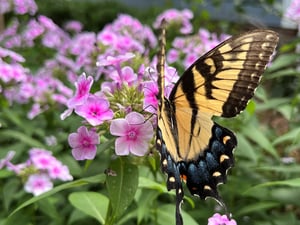
Has the high heat and humidity of summer here in the southeast got you down? This is the time of year when people question what they were thinking back in spring when they planted an entire garden! Though I can’t do anything about the weather (other than commiserate!) I do have some outstanding, low maintenance, high performance plants to recommend.
My Monthly Top 5
At the end of each month over on the Brie the Plant Lady YouTube channel, I highlight 5 impact plants for gardeners in the southeast. My top picks for this summer have included a few native perennials and several must have annuals. These top 5 lists are my personal recommendations for plants that won’t let you down, even when the temperatures are unbearable.
Here's my July Top 5 video which highlights all the plants discussed below:
Plan for Success
In my garden ALL these selections are growing directly in Soil³ compost where they thrive in full to part sun, which means 4-8 hours of direct light. During extreme heat and dry weather I run sprinklers to ensure the plants don’t suffer. The addition of Soil³ makes a big difference in their overall performance. Every winter I top dress all my garden beds with 2-4” of Soil³ which has resulted in lush growth and low maintenance habits.
Fertility is a subject that can be quite confusing as there a lot of factors that influence how well a plant absorbs essential macro nutrients of N-P-K. In general, I recommend applying a light layer of a low rate (such as 10-10-10), organic fertilizer once in the spring (March) and again in fall (November) to ornamental plants (not to lawns because they have a different protocol depending on if a cool season or a warm season lawn). That, along with topdressing with Soil³, will ensure your garden thrives.
With those tips for growing healthy plants in mind, let’s look at some of my summer favorites.
Garden Phlox
Phlox paniculata
First up is the classic native garden phlox that reliably blooms through the summer and attracts a wide array of pollinators like bees, butterflies, and interesting creatures like the hummingbird moth (Hemaris spp.) Check out the BriethePlantLady Instagram page for more reels like this featuring all my favorite pollinators that visit my large clumps of phlox!
Not all garden phlox are the same. New varieties have been bred to be much shorter with strong stalks that won’t need to be pruned. Many new cultivars have also been selected for better powdery mildew resistance, which is a great quality considering many old-fashioned varieties suffer in late summer and early fall and look horrible.
With more than 100 cultivars in production it is important that you research the varieties that you are looking to purchase so you understand where they will grow best in your garden. Older selections can grow 4’ or more even after they have been chopped in half in May-June, so those are best suited for the middle of a border. In contrast, many new varieties are short and should be planted along the front.
One of my favorite varieties is the brilliant and beautiful but very spreading form called ‘Bright Eyes’. This has a soft pink bloom with a dark pink eye and it’s a gorgeous addition to the garden. I used to resent how much space it takes up but now I appreciate how efficiently it grows, blocking unwanted weeds and providing an endless buffet of nectar for pollinators.
There are a lot of great new varieties being offered through Proven Winners including the Luminary™ collection which is the gold standard for powdery mildew resistance. ‘Opalescence’ looks very similar to ‘Bright Eyes’. ‘Backlight’ is a pure white selection. ‘Sunset Coral’ is a lovely salmon pink color and ‘Ultraviolet’ is hot pink-purple.
Do animals eat Phlox? YES! I have found that deer, rabbits, and groundhogs will eat anything when they are hungry. In my garden phlox get nibbled a bit but not bad enough that I need to put a cage or fence up. In May, when they are actively growing, I will apply animal repellent in hopes of tricking the baby animals into thinking they taste bad, and to encourage those critters to graze elsewhere!
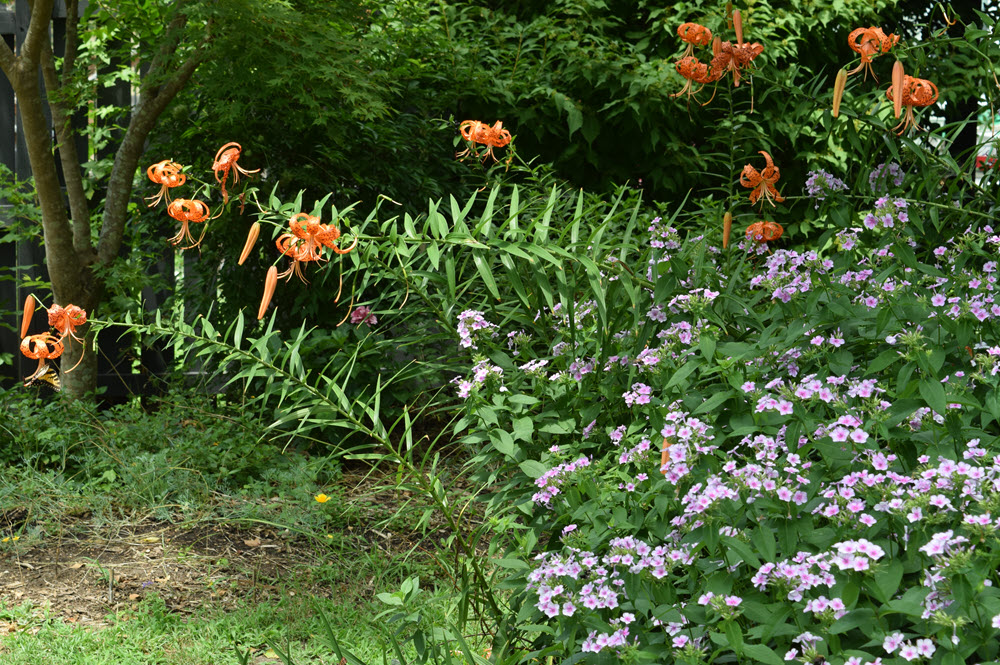
Phlox and tiger lily pair together in this corner of my garden to make a pollinator buffet! Both are tall, spreading perennials that prefer more sun than shade.
Tiger Lily
Lilium lancifolium
The next featured plant offers beautiful flowers in late June and July. As I mention in the video above, this lily that is native to Asia, can be somewhat aggressive in the garden - so beware! This is an EASY plant to grow in sun to part shade and reliably returns and spreads each season. The flowers are brilliant orange with black dots. And though they offer no fragrance, they are favored by many pollinators including bees and butterflies.
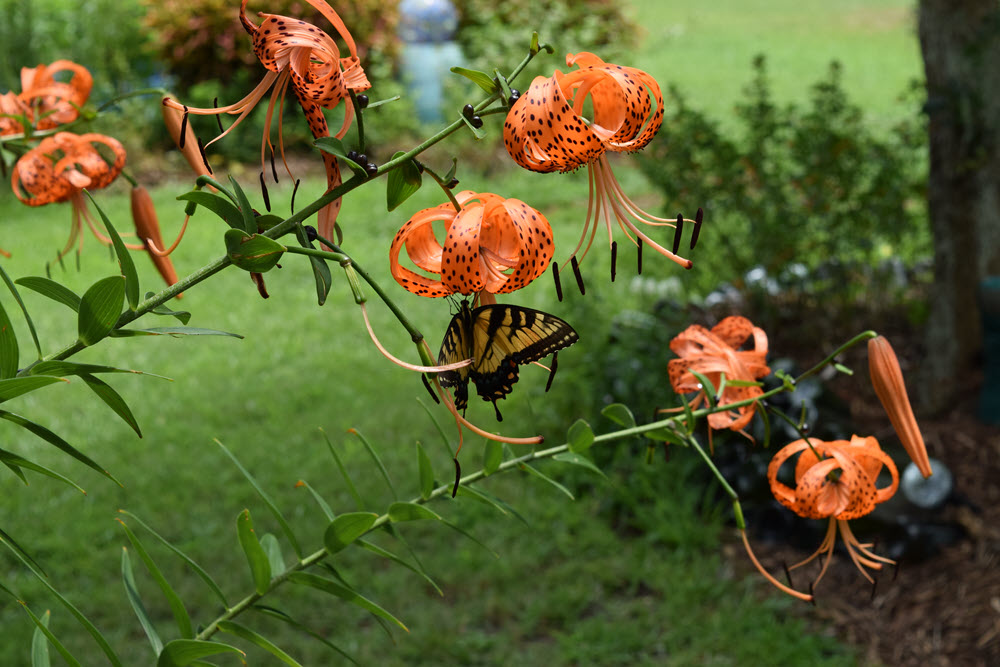
While the butterflies enjoy the dramatic tiger lily blooms, they make excellent cut flowers that I adore as well. They can last up to 2 weeks indoors but watch my video above for a tip on avoiding pollen stains.
Tiger lily is unique because it produces aerial bulblets, known as bulbils, which form in the leaf axils. These small black structures will produce new plants that are genetic clones of the parent and are the main reason this species can spread so easily.
At the end of summer, I cut the tall stalks to the ground where they lie dormant all winter. From a low maintenance yet high impact perspective, it is hard to beat the tiger lily!
Coneflower
Echinacea purpurea (and hybrids)
Native coneflowers certainly deserve a spot in every garden and in recent years I have been devoting a lot more space in both full sun and part shade to growing cultivated selections and the straight species which freely self-sows. There are 10 different species of coneflower found growing in moist to dry prairies and open wooded areas in the eastern and central US. Sadly both Echinacea leavigata and E. tennesseensis are listed as endangered species, which is a great reason to include them in your garden!
The botanical name, Echinacea is derived from the Greek word ekinos, meaning sea urchin, referencing the spiny central disk of seeds that yellow finches love to devour when the blooms have faded. Coneflowers are one of the most popular herbal supplements in the world, noted for boosting immunity against colds and flu. Of course, most of us grow them because they are pretty and require very little help along the way.
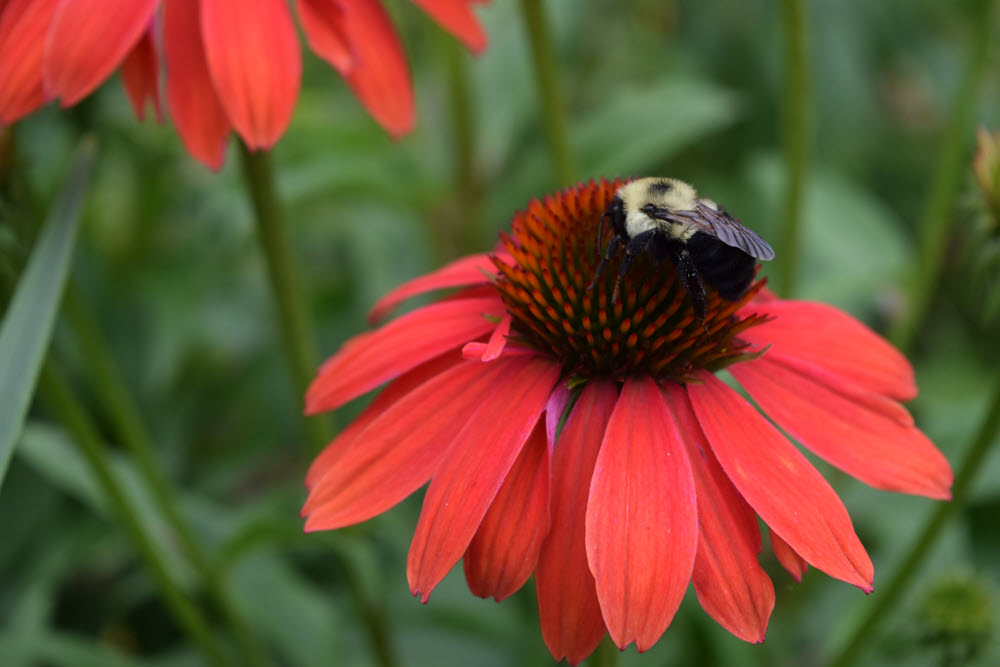
In recent decades plant breeders have devoted a lot of time and resources to making selections of coneflowers that boast a rainbow of colors, various flower forms, disease resistance, and a dwarf height (just like the newer phlox varieties). In my opinion some of this breeding is taking away from the natural beauty of the plant as well as removing its purpose: providing nectar to pollinators. For instance, the “pom pom” forms are completely sterile and produce no accessible nectar at all, so what is the point in growing them? And we don’t need every plant to max out at 12” tall!
PRO TIP: Visit a Trial Garden
With hundreds of cultivars in production it can be hard to figure out which varieties are best to include in your space. I encourage you to visit a public garden that has an All-American Selections Trial growing through the season. This is a great resource for you to see what new varieties thrive in your specific climate. In my area, NC State has a great trial garden growing at the JC Raulston Arboretum. Here is a video of a recent visit:
I focus on collecting simple single flowered forms of coneflower because I know they will support the ecosystem that exists in my garden. You really can’t go wrong with the straight species Echinaceae purpurea. The bees and butterflies love it, and the gold finches will readily eat the seed when ripe. I have a large population self-sowing under a live oak that gets only 4 hours of direct sun!
There are many older varieties that are well worth growing including the white flowering form ‘White Swan’ and the magenta colored ‘Magnus’. ‘Kim’s Knee High’ remains a favorite of mine, though it is hard to find these days.
There are other great single flower forms that perform very well and attract insects. To help make your shopping experience a bit easier here are a couple varieties that I have had great success with over the past 5-10 years in my central NC zone 7 garden:
- The Sombrero® series are brilliantly colored, compact, early blooming selections that come in vibrant shades of coral, pink, red, orange, yellow, and white. I have been very impressed with their performance and buy them every time I see them at a garden center!
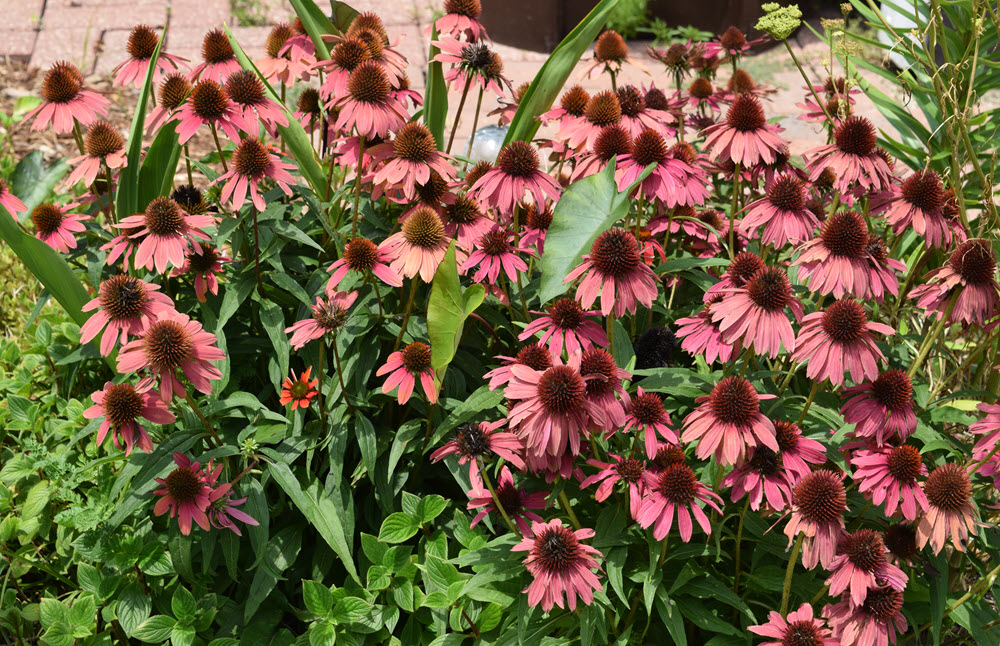
This Sombrero Baja Burgundy in my front garden has been full of rich-colored blooms for several weeks and should keep flowering until frost. - ‘Pretty Parasols’ is another notable new hybrid selection. It offers bi-colored blooms that stand 24-36” tall on strong stems that are ideal for cut flower arrangements. This variety is the earliest to flower in my garden and continues to produce blooms until frost!
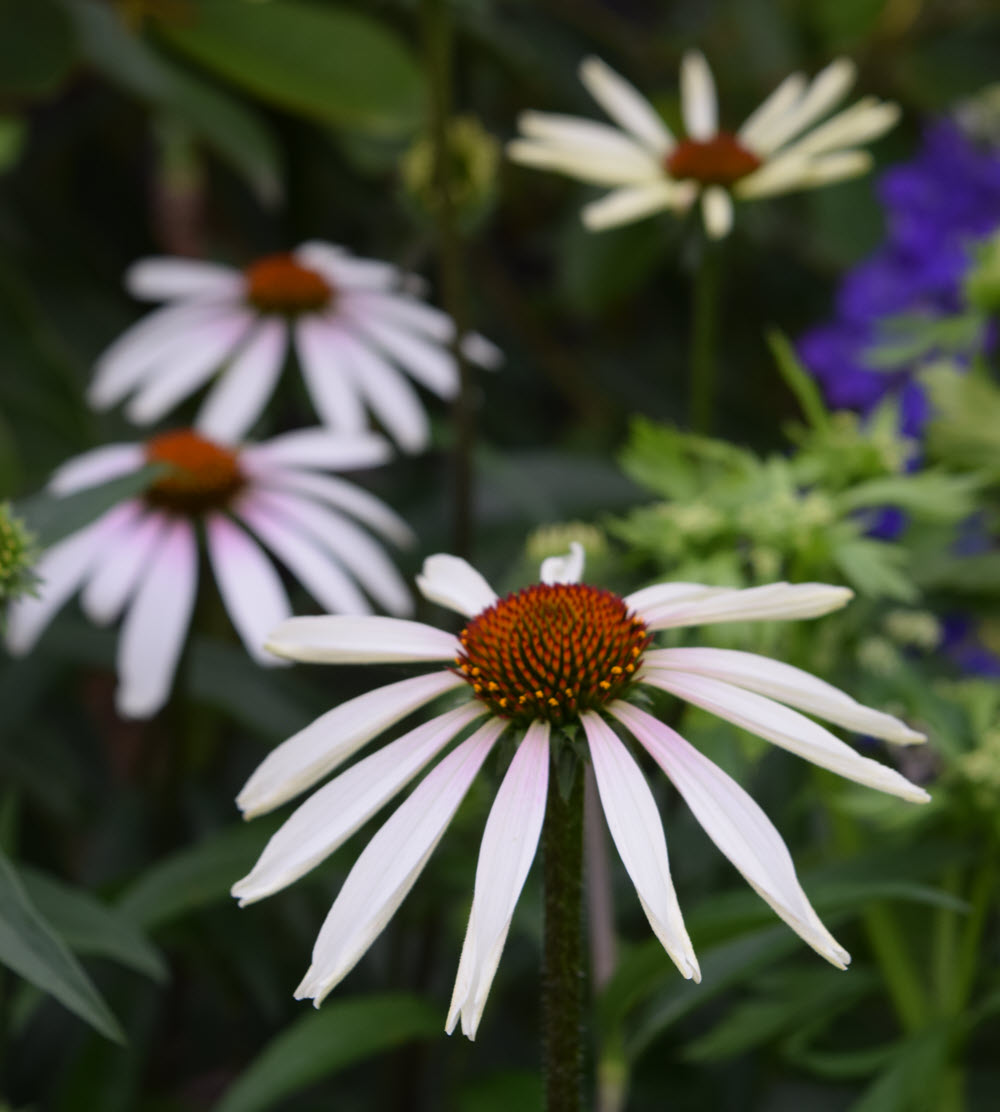
As the blooms on 'Pretty Parasols' mature the light petals develop a bright pink inner ring.
Suncredible Yellow
Helianthus Hybrid
Perhaps the most impressive new annual to hit the market is the ever-blooming hybrid sunflower sold as Suncredible® Yellow through Proven Winners. I have been watching this in trials for several years and was so excited when I found it at Johnson Nursery Garden Center so I could finally include it in my own garden.
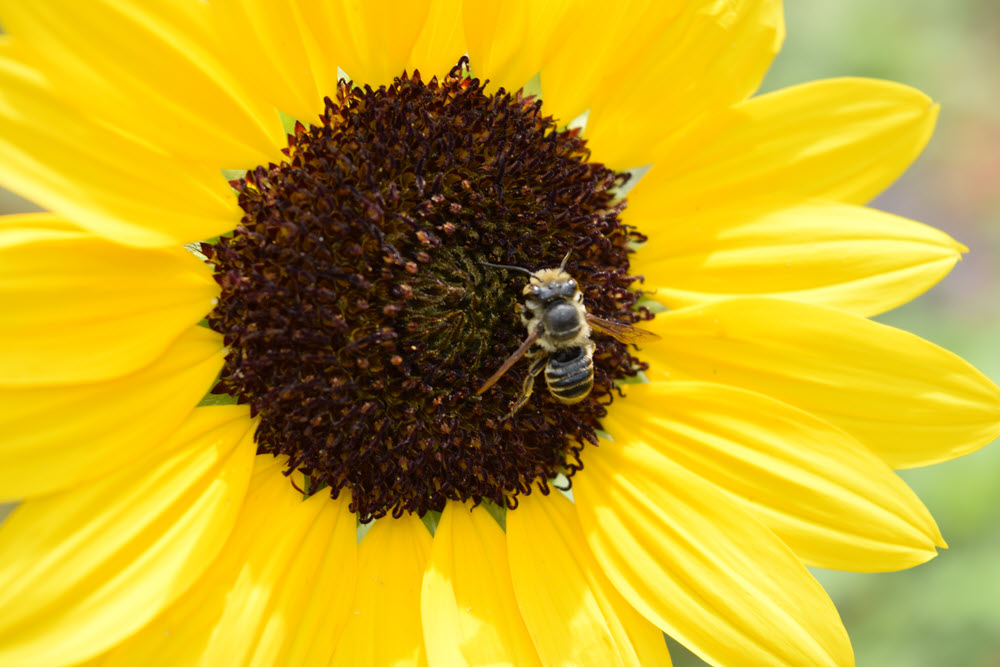
Each of the multiple blooms on the Suncredible Yellow sunflower hybrid are just 4" across and the smaller native bees love visiting.
This year I gave this amazing sunflower prime real estate, in the big front garden that greets visitors when they first arrive. This bed is full sun all day and is easy to keep watered as it is house adjacent and only needs one hose to reach it, which was important because until late July we were exceptionally dry, and we had to run sprinklers regularly. Watch how we transformed this garden bed from spring cottage flowers to a summer display of sunflowers and other companions:
To say I am impressed by this plant, and the entire garden space where it is growing, is a major understatement. It hasn’t stopped blooming for even one day and doesn’t require deadheading! The bees and butterflies are always visiting, and the blooms are excellent, long-lasting cuts for indoor arrangements. Next year I have my sights set on including the newest cultivar Suncredible Saturn™ which has a bronze ring at the base of the bright yellow petals. Let's jump in at the 30-minute mark on this video tour of the UGA Trial Garden last summer to see these growing!
Coleus
Coleus scuttellarioides
Last but definitely not least, my #1 choice for the top summer performing plant must be coleus. I can’t narrow down a specific variety because I love them ALL. Honestly, I have never met a coleus I didn’t like and each spring I challenge myself to collect as many as possible to use in containers, the Live Wall, and in the ground to add endless color and exuberance. That’s the thing, coleus can be tacky and that is precisely why I love them irrationally.
The nomenclature of this plant has changed a lot in the past two decades. I first learned it is as Solensotemon and was quite proud when that 5-syllable word would roll off my tongue. It was then changed to Plectranthus, and another favorite of mine to recite. I was relieved when botanists finally reclassified it as Coleus scutellarioides, which is the name that should remain!
Coleus have come a long way in the past few decades with endless varieties in every size, shape, and color. Probably the biggest difference compared to those seed grown varieties my grandma used to grow is how well they perform in hot, blazing, full sun! Have no fear, you can also grow them in shade-part sun provided you can give them ample moisture. There are two areas in my garden this year where the coleus reign supreme: the vertical garden in my driveway and the feed tank bed.
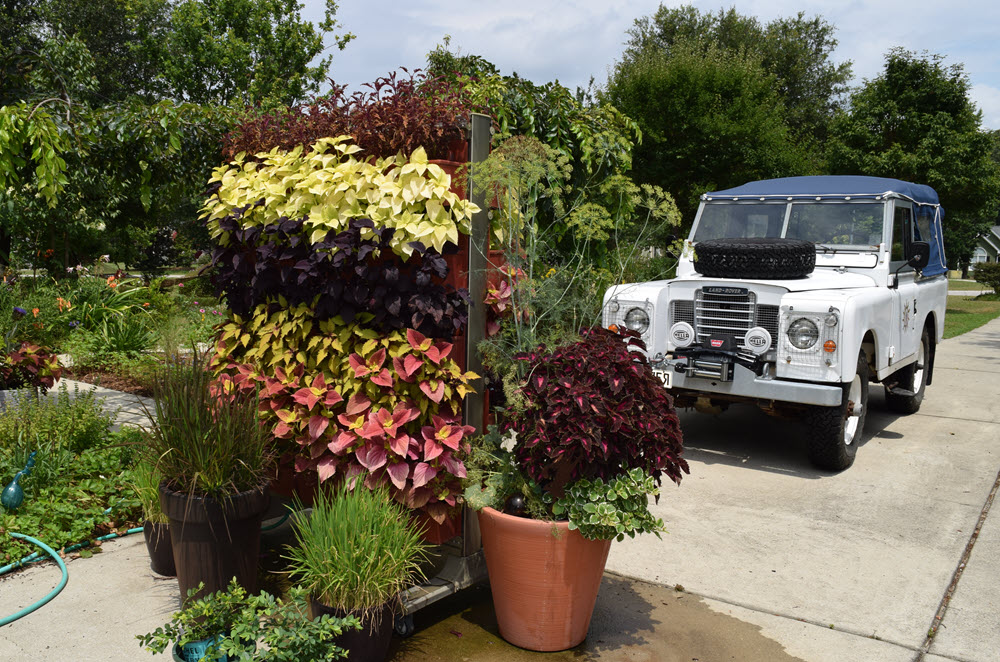
The LiveScreen living wall is stationed in my driveway and is planted year-round. In the winter I grow cool season annuals, and, in the summer, I like to plant it with assorted coleus for a dynamic display that is bold and heat proof! Watch how I plant the wall using Soil³ as the exclusive growing media:
The bed around the feed tank is another high impact area that is viewed from my back deck. My aim is to always have a tropical display surrounding the small pool so when you get in you are face-to-face with the colorful plants. This year I selected ColorBlaze® El Brighto Coleus, a great selection from Proven Winners.
Growing vigorously to 3’+ tall and wide, colorful coleus branches are ideal for indoor arrangements. The cuttings root easily in water and then can be planted outside again in the garden and containers.
Click to read why I love container gardening and see my other tips for container success.
Your New Favorite Plants
I hope this has inspired your garden plans for next summer! And I also hope you will visit a trial garden in your area — or at least check their trial results. It can be overwhelming trying to choose from all the varieties and selections at the garden center but with the top trial performers and my top 5 lists, you can find plants that should succeed.
Happy gardening!
Brie
Related Posts

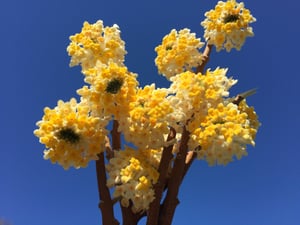
Brie's Plant Pick: Edgeworthia
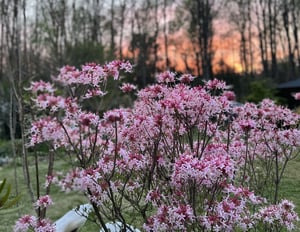
Brie's Plant Pick: Native Azaleas
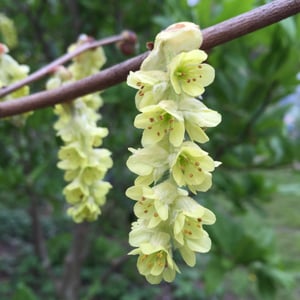
Brie's Plant Pick: Corylopsis

20 Must-Have Trees & Shrubs for Fragrance
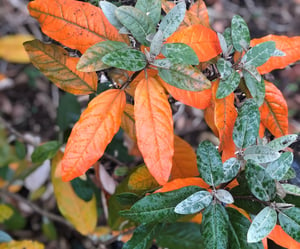

Did this help you out? Have any questions for clarity? Leave a comment below!